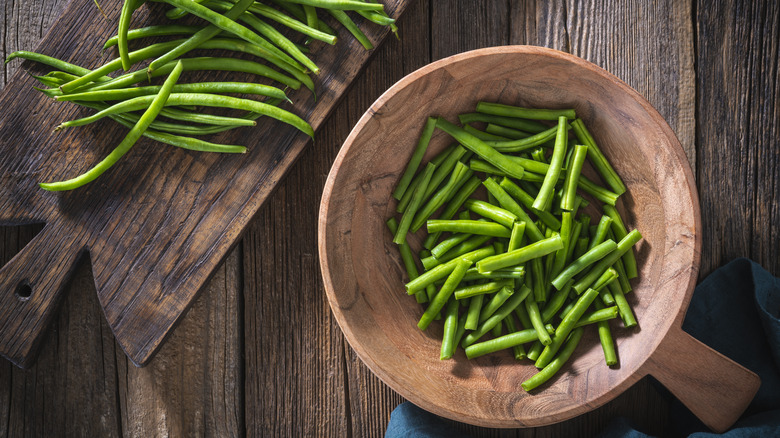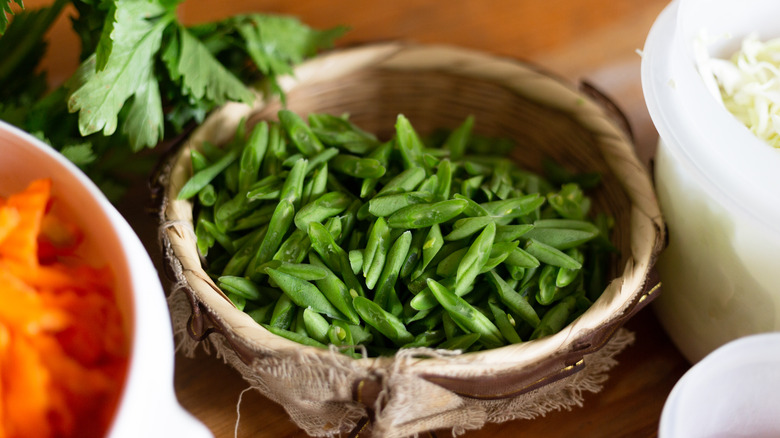The Difference Between Regular And French-Style Cut Green Beans
Did you know there are two different styles of cutting green beans? When you get home from the farmers market or grocery store with a bag of the fresh veggies in tow, you've got a few options for how to prepare them. The first, of course, is to trim the ends off with a straight cut, so the tip is flat and could (theoretically) stand up on a cutting board. If you'd like to get a little fancy, however, try the French cut, aka the julienne.
When you French cut your green beans, you're thinly slicing the entire veggies into strips. The process starts the same way a regular cut begins, by cutting off the stems. But then, you'll cut them in half lengthwise and slice each half into even skinnier strips. Not only is this more time-consuming than slicing green beans the regular way, but it requires a bit of technique, as the veggies are already pretty thin to start off. But the end result is pretty, delicate, and an even more tender version of the original green beans.
How to cut green beans two different ways
Cutting green beans the regular way is pretty straightforward — and for added efficiency, line all the ends up in a big stack so you can cut a bunch at once. Don't forget to do the same thing to the other ends of the veggies, and feel free to cut them up even more if you need smaller pieces. Slicing green beans French-style, however, can be accomplished a few different ways. Besides the manual process, which involves using a knife to make thin strips, you can also use a food processor.
First, you'll need to have a slicer blade. Then, cut your green beans so they're small enough to fit through the hole, and feed them through the blade horizontally. If they're still not at your desired width, you can lightly pulse them in the processor for a few seconds. You'll end up with perfectly skinny sticks, without having to labor over each individual veggie.
There is also such a thing as a green bean slicer — aka, a device made just for French-cutting green beans. While these slicers are designed to thinly cut the veggies, the downside is that you can only do a couple at a time. But if you don't have a food processor, this may be a quicker way to get your bunch trimmed. And now that you know the difference between a regular and julienne cut, you may want to give the latter a try.

